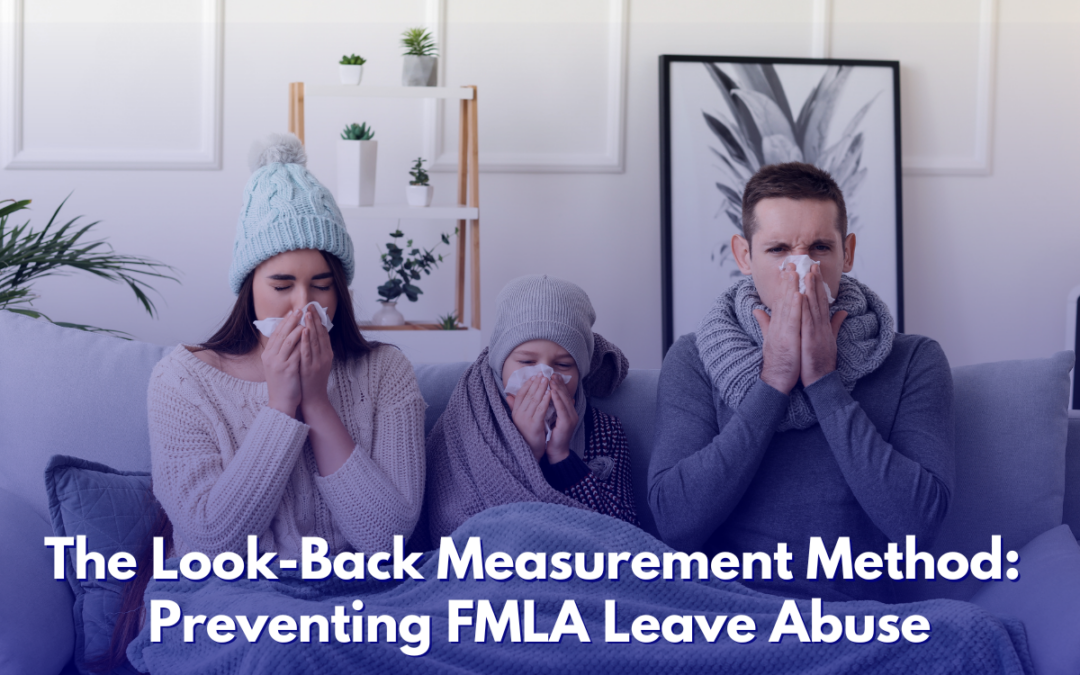The Family and Medical Leave Act (FMLA) provides employees with the right to take unpaid leave for family or medical reasons while maintaining their health coverage. To effectively manage FMLA leave and prevent abuse of policy, employers have the option to choose from four different methods to calculate the 12-month period in which the 12 workweeks of leave occur. Among these methods, the Look-Back Measurement Method, also known as the rolling method, is widely used despite its administrative challenges. Is it really the best approach to prevent FMLA leave abuse and maintain compliance with the law?
Understanding the Look-Back Measurement Method:
The Look-Back Measurement Method involves reviewing the last 12 months from the date of an employee’s request for FMLA leave. The employer calculates the total amount of FMLA leave used during this period and subtracts it from the employee’s 12-week leave entitlement. Unlike other methods, the Look-Back Measurement Method allows employees to accrue leave throughout their time off, making it crucial to continuously monitor their usage.
Preventing Leave Stacking and Curbing Abuse:
One of the key advantages of the Look-Back Measurement Method is its ability to prevent leave stacking, where employees take consecutive leave periods by strategically timing their requests. By recalculating leave entitlement as prior leave expires, the Look-Back Measurement Method ensures that employees cannot exceed their allotted FMLA leave. This feature helps curb abuse and maintain fairness in leave usage.
Implementing the Look-Back Measurement Method:
Employers must apply their chosen method consistently and uniformly to all employees. While the Look-Back Measurement Method may be more administratively challenging due to its ongoing recalculation requirement, many believe it is worth the effort to prevent abuse. The method involves assessing whether an employee is eligible for FMLA leave each time it is requested, based on their FMLA usage in the preceding 12 months.
Considerations and Challenges:
Although the Look-Back Measurement Method is effective in preventing abuse, it can be confusing for both employees and employers. Employees may face limitations in accessing the specific amount of leave they need if they do not meet the look-back period requirements. Additionally, some states may require using the calendar-year method for measuring state leave eligibility, adding complexity to leave calculations.
ADA Obligations and Other Legal Considerations:
Regardless of the method chosen for calculating FMLA leave, employers must still comply with obligations under the Americans with Disabilities Act (ADA), state and local disability laws, and state family leave laws. If an employee has exhausted their FMLA-protected leave, the employer must engage in the interactive process and consider providing reasonable accommodation, which may include job-protected leave.
When it comes to managing FMLA leave, the Look-Back Measurement Method stands out as an effective approach to prevent abuse and ensure compliance. Despite its administrative complexities, the ongoing monitoring of leave usage under this method helps maintain fairness and discourages leave stacking. Employers should implement the Look-Back Measurement Method consistently while considering other legal obligations to create a supportive and compliant work environment for employees needing FMLA leave.
This blog was taken from SHRM on June 7, 2023.
